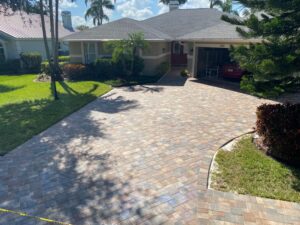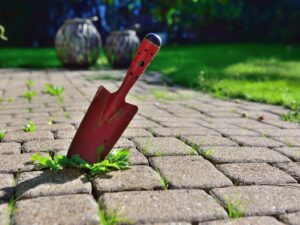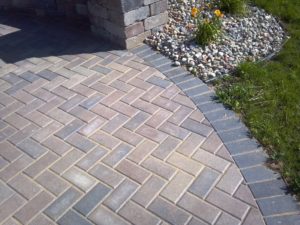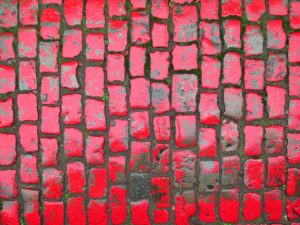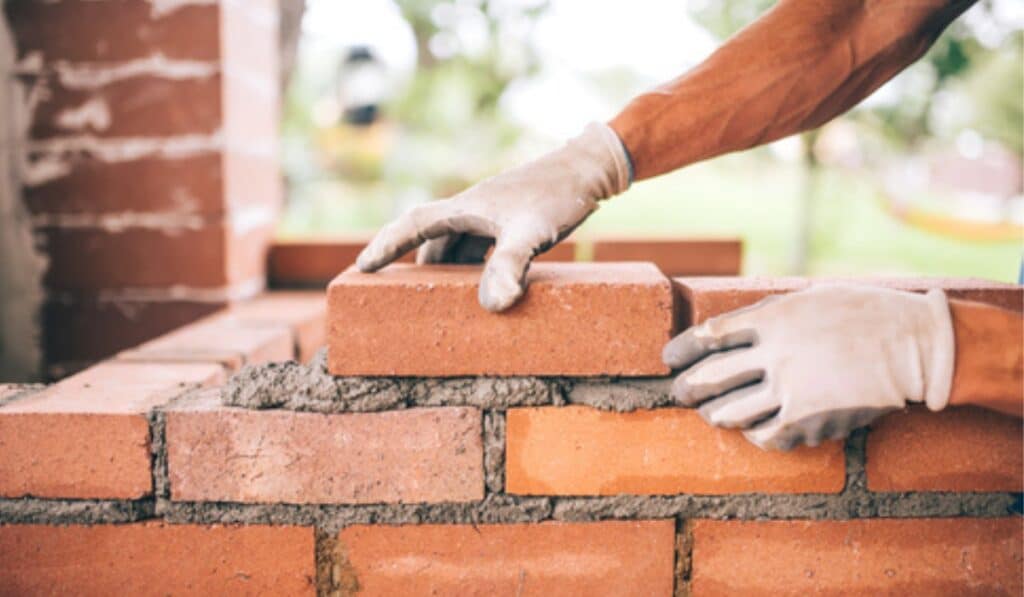
Bricks continue to be a very popular element in hardscape. Even with the advent of more modern forms of concrete and porcelain pavers, bricks still hold a special place in the hearts of many homeowners. When are bricks indicated, then? How to properly use them and how to stick bricks together?
The goal of today’s article is to talk about that subject. We want to present you with all the possible forms in which you can stick bricks together and use them for your project. So let’s get right into it.
How to Stick Bricks Together: Two Different Ways
There are two different ways in which you can stick bricks together: mortar and masonry adhesive.
Mortar is an old friend of anyone who has any experience working with construction or hardscape. It consists of a mix of cement, water, and sand that, when mixed, becomes one of the strongest bonding agents out there.
It is a classical element of construction and, due to its strength, it is used for the heaviest of jobs, especially building structures. Mixing and using mortar is not a simple process – it needs to be handled carefully.
The alternative to mortar is masonry adhesive. They greatly simplify the process of working with bricks, as well as many other masonry elements. They don’t require mixing and are much easier to apply.
In fact, they are even more versatile than mortar, being used for small repairs like cracked walls and loose landscape blocks. However, this versatility and easiness to use come with a price.
They are not as strong as mortar, so they are not recommended for construction or heavy vertical applications. Even though their usage is much simpler and in fact really strong, they are not a suitable replacement for mortar.
Bricks as Paving Option
Bricks are still a very popular choice as a paving option. When thinking about them like that, “sticking” them is not always the best option.
When using bricks as pavers, you can place them on top of a pre-existing concrete installation, and for that the use of masonry adhesive is perfect.
But there’s also something called a dry installation, which is far superior and consists in simply placing your paver of choice on top of a prepared bedding of road base and sand.
Bricks can be in fact an excellent paving choice depending on your scenario. But in some cases, other pavers perform much better.
How to Make Mortar
Mixing mortar is easy once you get the hang of it. You’ll only need a few materials, which we’ve listed below:
- Mouth protector;
- Safety goggles;
- Safety gloves;
- Any kind of mixing board, like a wheelbarrow or plastic/wooden box;
- A sheet of tarpaulin;
- Plastic buckets;
- Mason spoon;
- A stiff bristle brush.
Most cement mixtures you buy will come with instructions. If any of them say something different from what we say here, follow them – being a commercial product, the manufacturer’s instructions always have priority. Here, we are going to give you more of a general guide.
Everything works on a ratio basis; that’s why you need many plastic buckets. The standard mixture is 1 part of cement for 3 parts of building sand. As for water, it is hard to give an exact measure.
You’ll have to control the amount of water to find a balance. You don’t want to make the mixture too wet, but also not too dry.
Protect the place you’re going to do the mixture with the sheet of tarpaulin and carefully pour all the elements in it. This might produce some cement dust, so don’t even think about skipping the mouth protector.
Start mixing all the dry elements with the masonry spoon. Once they have reached a uniform color, slowly start to pour water into the mix and keep mixing.
The mortar needs to be smooth and consistent. If it gets too crumbly, with big pieces still holding together, you need more water. If the mixture is dripping off too soft, you’ll have to compensate by adding more elements, always following the original ratio.
What is the Best Method for Me?
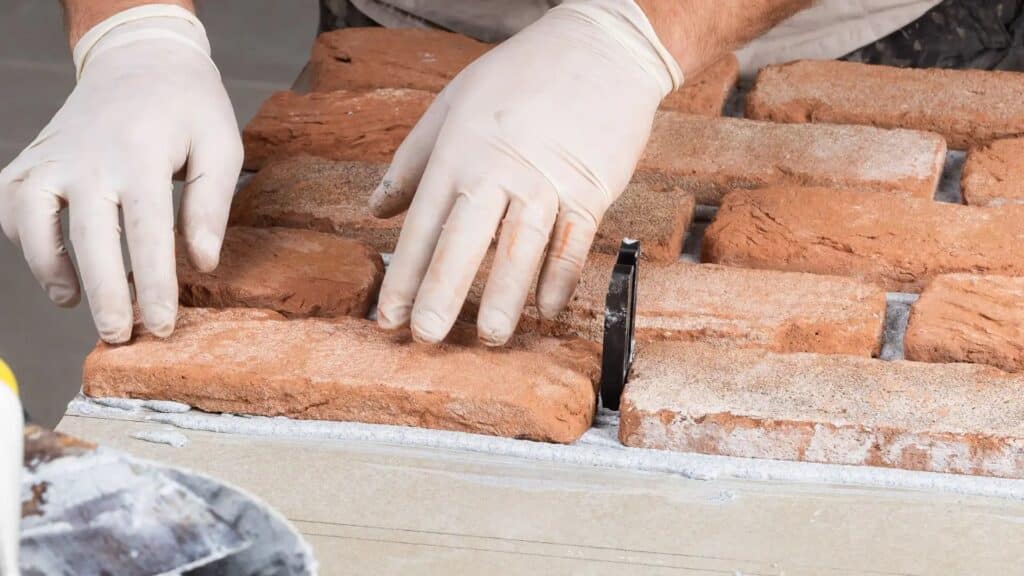
That question is almost impossible to answer without a professional on-site. No setting is the same when it comes to construction and hardscape.
We have some overall guidelines and recommendations, but working closely with professionals is the best way to ensure you will be making the correct decision in all steps of your project.
You see, here at SS Pavers have worked on countless projects over our 12 years of experience in the business, and many of those projects required a more personal touch that only a professional could provide.
So rather than choosing blindly for yourself what is the best method to stick bricks together for your projects, find a professional in your area you can trust to help you!
And if you happen to be around our area of activity, the Sarasota and Manatee counties, in Florida, why not give us a call to help you?
You can contact us any time for a free estimate on our services. Call us right now at 941-773-3098 or email us at sales@sspavers.com. We would be more than happy to help you with any hardscape need you might have.

